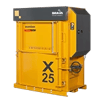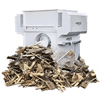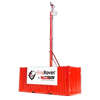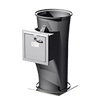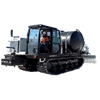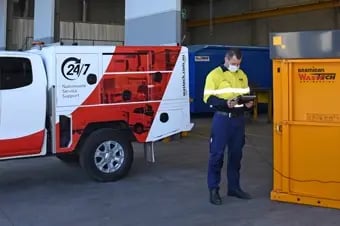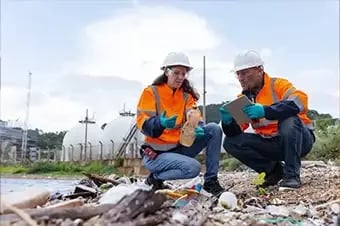
How to Dispose of Construction Waste in Australia
How to Dispose of Construction Waste in Melbourne
Construction waste is made up of all the materials discarded from a building, renovation or demolition project. Whether you’re the manager of a construction site or a commercial waste facility, construction waste begs a critical waste management question – how to dispose of concrete, bricks, tile, glass, timber and other construction materials.
Construction waste must be handled and sorted carefully. Construction waste takes up a lot of space in landfills, but many materials can be repurposed or reused. Construction sites also generate hazardous materials, like mercury, lead and asbestos. These materials require a careful construction waste disposal plan to handle safely.
When it comes to building waste disposal in Australia, it’s vital to institute better practices at every stage of the waste life cycle. Wastech Engineering is committed to helping commercial facilities improve sustainability and efficiency with better waste management equipment and design. So, here’s what you need to know about proper construction waste disposal for recyclable, disposable and hazardous waste materials.
Recyclable Construction Waste
Before you even think of sending construction waste to a landfill, you should sort and process the recyclable materials. Concrete, stone, timber, glass and metals can all be repurposed into other construction materials and items. For example, you can recycle concrete into aggregate, wood into engineered wood, and metal into new metal.
There are special machines required to process various construction waste materials like:
- Pilot Crushtec Crushing and Screening Equipment: Crush concrete, rocks, stone, asphalt, river rocks and other demolition materials into small aggregate and sand for reuse.
- Presto Timber Crusher: Reduce the volume of wood waste into splinters for transportation, storage and recycling.
In addition to the sustainability benefits, using the right equipment to process construction waste materials greatly reduces the volume of waste at your facility. This means that construction managers can save money on transport, and waste facilities can process more material more efficiently.
Disposing of Construction Waste
Non-recyclable construction waste goes to landfills. This type of construction waste usually includes ceramics and kitchenware, windows, mirrors and treated glass, certain types of wood, light bulbs and yard waste.
Hazardous Construction Waste
Hazardous construction waste is also non-recyclable, but it cannot go to a traditional landfill either. Hazardous construction waste typically includes materials with mercury, lead-based paint and asbestos. These types of waste can pollute the air and soil if they break down in a landfill, so they go to a hazardous waste facility for safe storage.
Better Building Waste Disposal in Australia
Australian waste facilities need to institute better practices and machines for handling construction waste. In 2020, Australia generated 27 million tonnes of waste, and 44% was from the construction and demolition industries. However, we only recycle about 76% of this waste.
If your company is interested in learning more about how to dispose of concrete and other construction waste, Wastech Engineering has a range of quality equipment to improve your processes. Learn more about what you can do to improve Australia’s construction waste processes by calling us on 1800 465 465 or find more information online.
